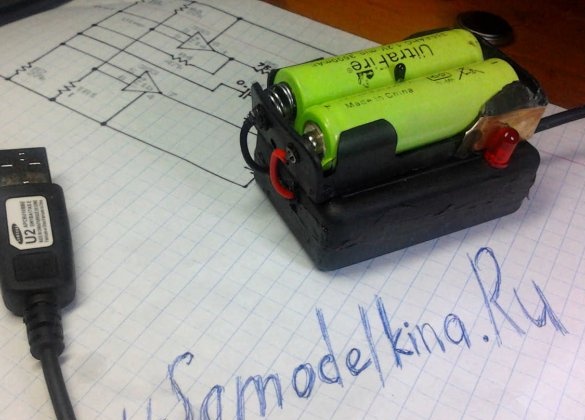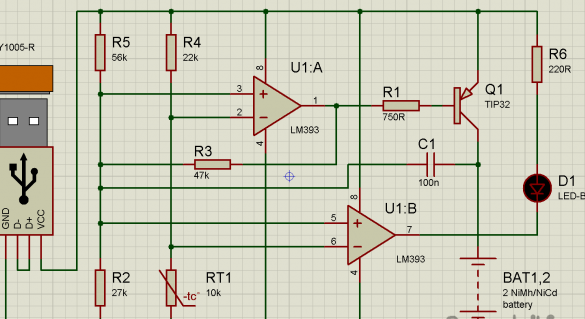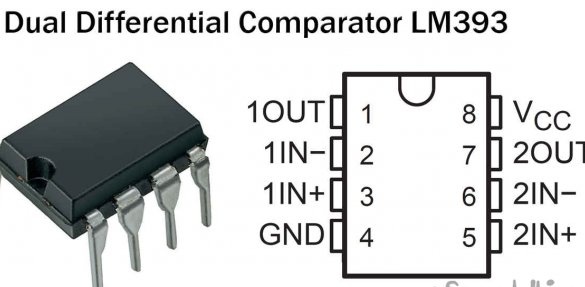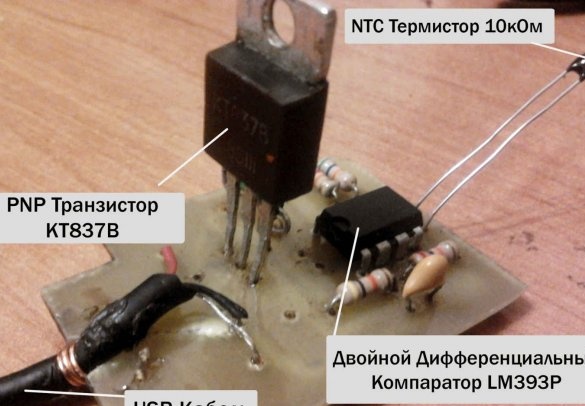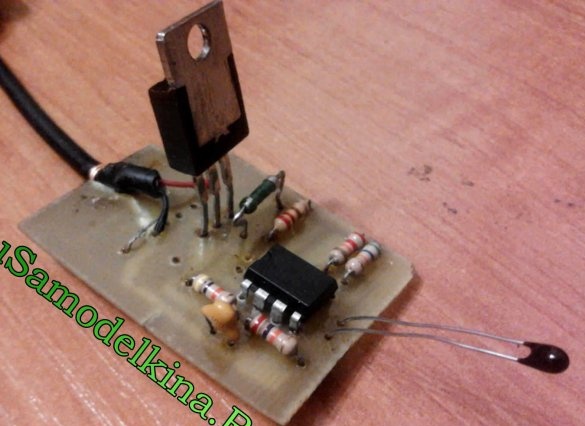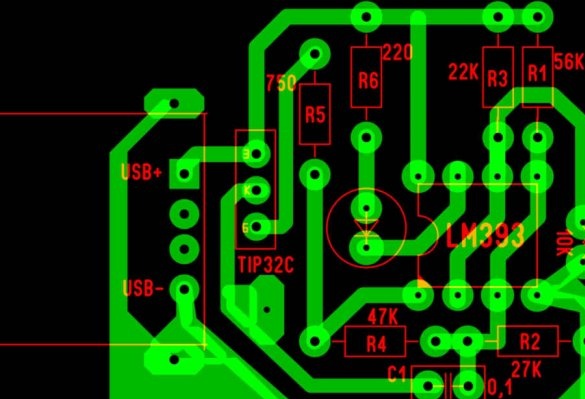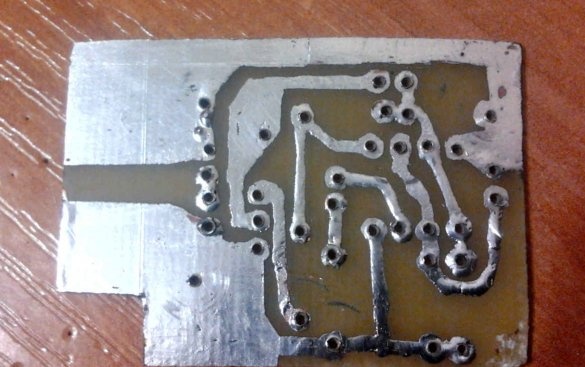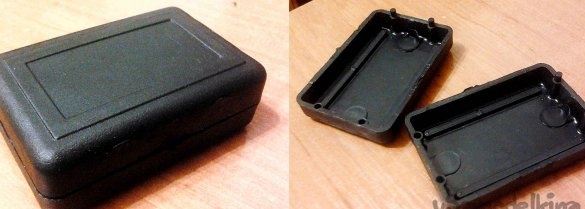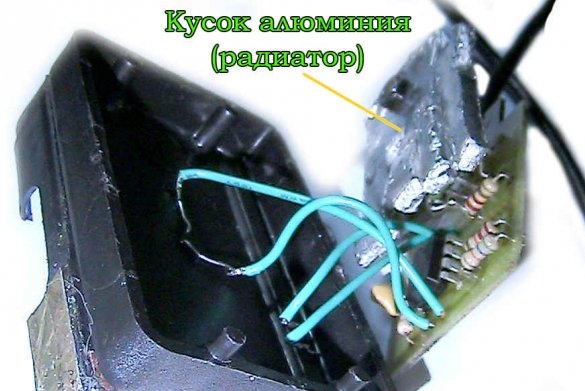A simple compact charger for NiMH and NiCd batteries with additional useful features such as automatic shutdown and temperature control.
There is a USB port in almost all modern computers and laptops. The current supplied by USB 2.0 can be more than 500 milliamps, at a voltage of 5 volts, that is, at least 2.5 watts, and USB third generation even more. Using such an energy source is very convenient, since many charges for smartphones / tablets also come with a USB connector, and the computer is often at hand. Today we will charge for rechargeable (AA) and little fingers (AAA) NiMH / NiCd rechargeable batteries from a USB port. Industrial USB chargers for batteries can be counted on the fingers and they usually charge small currents, which significantly increases the charging time. In addition, having collected a simple little diagram, we get an excellent charger with a light indication and a temperature sensor, the cost of which is very small $ 1-2.
Our charger immediately charges two NiCd / NiMH batteries with a current of more than 470 mA, which makes charging very fast. Rechargeable batteries can heat up, which will undoubtedly negatively affect them, decrease the capacity, peak current output, normal operation time. To prevent this from happening in the circuit, automatic power cuts are implemented as soon as the battery temperature is 33 or more degrees Celsius. An NTC thermistor with a resistance of 10 kOhm is responsible for this useful function, while heating, its resistance decreases. It, together with a constant resistor R4, forms a voltage divider. The thermistor must be in close contact with the batteries in order to well perceive the temperature change.
The main part of the circuit is a dual comparator-chip LM393.
Analogs that can be replaced with LM393:
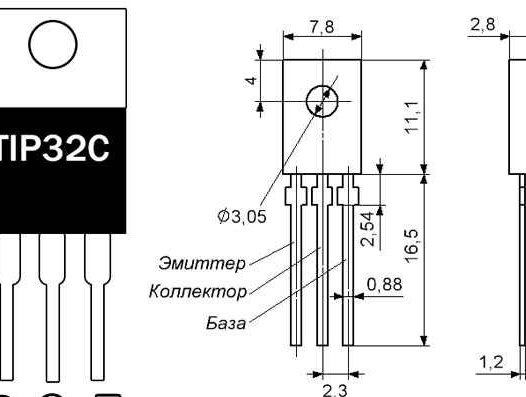
When charging, the transistor heats up, it must be put on the radiator. Instead of TIP32 it is possible to take almost any PNP structure with similar power, I used the KT838A.The full domestic analogue is the KT816 transistor, it has a different pinout and housing.
The USB cable can be cut off from an old mouse / keyboard or purchased. And it’s possible to solder the USB plug directly to the board.
If the LED is on when power is supplied, but the circuit does not charge anything, then you need to increase the resistance of the current-limiting resistor R6. To check the normal operation of the circuit between the ground and the third output of the microcircuit (Vref), there should be about 2.37 Volts, and on the second contact (Vtmp) LM393 1.6-1.85 Volts.
It is advisable to charge two identical batteries so that their capacity is approximately equal. And it turns out so that one is already fully charged, and the second is only half.
The charging current can be set independently by changing the resistance of the resistor R1. Calculation formula: R1 = 1.6 * desired current.
For example, I want my batteries to be charged with a current of 200 mA, we substitute:
R1 = 1.6 * 200 = 320 ohms

This means that by installing a variable / interline resistor we can add such an unusual function for chargers as independent selection of the charging current. If, for example, the battery needs a charge of no more than 0.1C, then unscrewing the resistor, we can easily set the value we need. This is very important for such miniature industrial batteries, in which the capacity is extremely small and due to their size.
 [/ center]
[/ center]When the batteries heat up, charging will be turned off. This can increase the charge time, so I recommend installing cooling in the form of a small fan.
If you have NiCd batteries, then you need to discharge them up to 1 Volt before charging, that is, to use 99% of the capacity. Otherwise, the negative memory effect will be felt.
When the banks are fully charged, the charging current will drop to about 10 mA. This current will prevent the natural self-discharge of Ni-MH / CDM batteries. The former have a 100% discharge per year, while the latter is approximately 10%.
The circuit board for the charger exists in several versions, in one of them the USB jack is conveniently located directly on the board, that is, it is possible to use a USB cable such as father-father.
Download boards in .lay format here
The case was bought ready-made NM5, and a battery compartment is glued to it. A usb charger board and a small transistor heatsink easily climbed into the middle of the case. The red indicator LED D1 and the temperature sensor RT1 are brought out.
This charger is very convenient, practical and does not take up much space. It can charge your batteries very quickly. If you use not a USB port, but charging for a phone / tablet, then the charging current can be significantly increased, for example, the use of a pulsed power supply for charging the smartphone led to an increase in current strength to 0.72 amperes, and hence reduce the time of a full charge. Thus, we use the port not for data transmission, but as an alternative power source.


